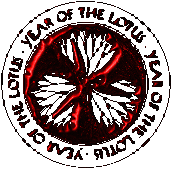Combat 2nd edition
Styles - Southeast Asia
Bersilat
This is the official style of Malaysia. It is thought to have been influenced by both pentjak-silat and Chinese wushu. Like pentjak-silat, bersilat is a major system with many separate schools with varying emphasizes. However, most employ the animal styles of wushu and emphasize kicks.
Bokator
This ancient Khmer martial art combines hard strikes with grappling and submissions as well as a traditional school of weapons training.
Cuong-Nhu
This modern Vietnamese style combines elements of karate and aikido.
Hac Ho
"Black Tiger", this Vietnamese school derives from Chinese wushu's "tiger style".
Mhuy Khmer
This kickboxing style is native to Kampuchea (formerly Cambodia) and very similar to mhuy thai. Arguments abound about which fighting system came first.
Mhuy Thai
This is an aggressive kickboxing style native to Thailand. It has little internal interest, focusing mostly on powerful techniques (therefore, it can easily be represented with the Brawl Talent). It is sometimes called the "Eight Limbs Style": it mainly uses the fists, feet, elbows, and knees. The use of Thai weapons with this style is known as krabi-krabang.
Nga Mi Phai
This Vietnamese style is based on Fukien Shaolin kung fu.
Qwan Ki Do
Another Vietnamese style, qwan-ki-do is similar to karate in its external and linear methods. It also teaches the Vietnamese sword and Taoist philosophy.
Vo Thuat Vietnam
This is a modern Vietnamese school of grappling influenced by judo.
We Dao Kan
We Dao Kan is a Laotian martial arts style that teaches strikes to vital areas, pressure points, and internal development.
Styles - The Pacific Rim
Arnis/Escrima/Kali
These three styles are very similar and are all native to the Philippines. Most developed in antiquity, but were later deeply influenced by the Spanish occupiers. The use of sticks or blades often resembles Spanish fencing. Their self-defense techniques emphasize mobility.
Bhakti Negara
Although technically a sub-style of pentjak-silat, this style is mentioned separately here because it is the school practiced by the Hindu-dominant Balinese. Due to Bali's cultural significance, it is worth noting.
Kapu Luilua
This ancient Hawai'ian and Polynesian martial art was probably exchanged by travelers "island-hopping". It taught pressure points and development of internal energies (called mana). Its instruction was left to priests who were often masters of the style. Many of its secrets were lost after Western occupation.
Kuntao Silat
Like bhakti negara, this style is not particularly unique. It is actually Chinese wushu, but it is the style practiced by Chinese communities in Indonesia. It is worth noting for its cultural significance, and the fact that the Indonesian government has outlawed its practice.
Pentjak-Silat
Pentjak-silat is a massive system with dozens of sub-styles, much like wushu. This Indonesian system was influenced by Indian and Chinese martial arts. It teaches various weapons, including the curvy blade known as a kris (and considered as important as the katana is to Japan). Many systems also have an internal base, encouraging the development of ilmu (ch'i). However, pentjak-silat is steeped in secrecy and religious prominence. Rarely are non-Muslims taught this style, and would-be practitioners can be expected to convert first.





